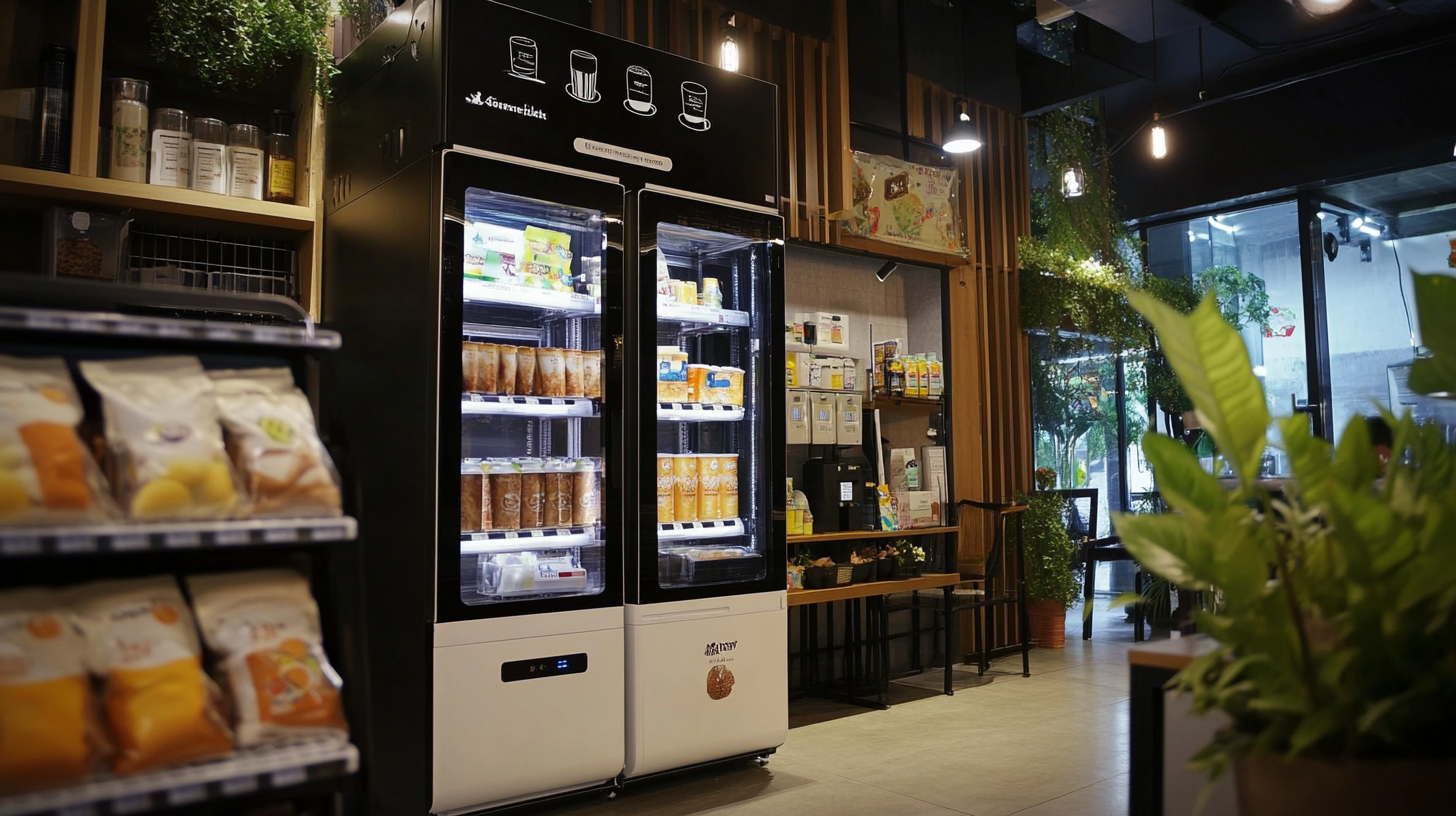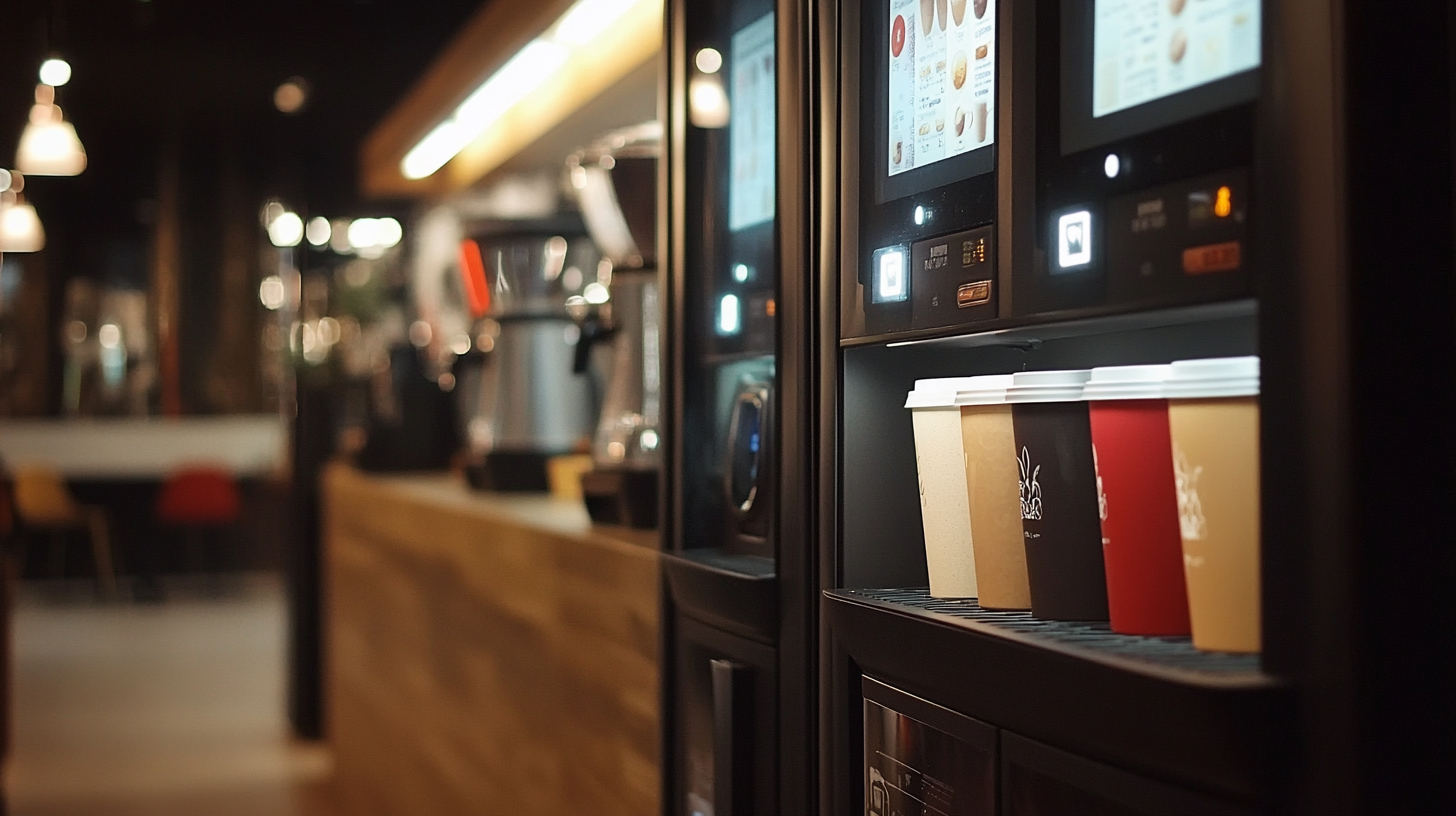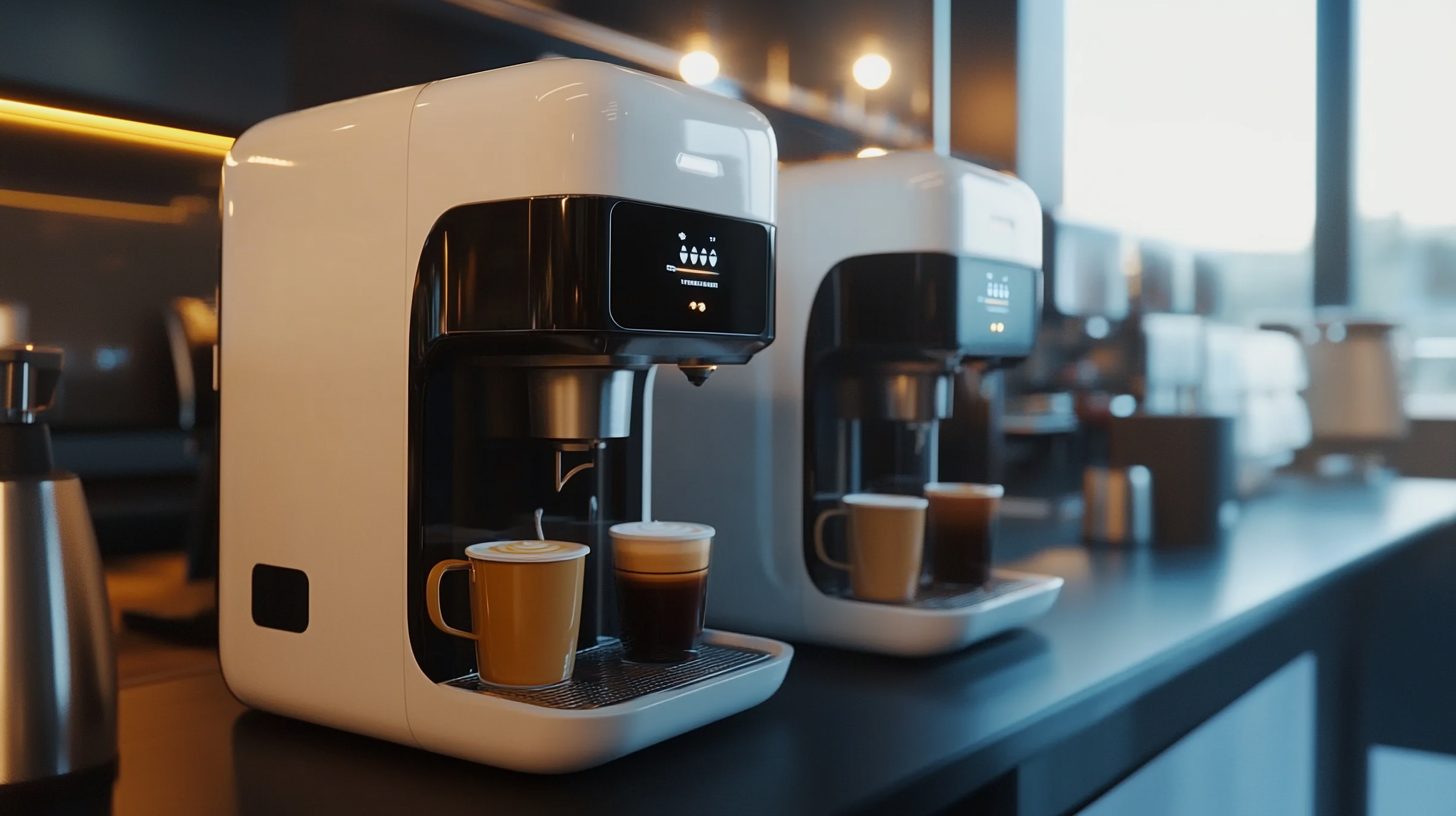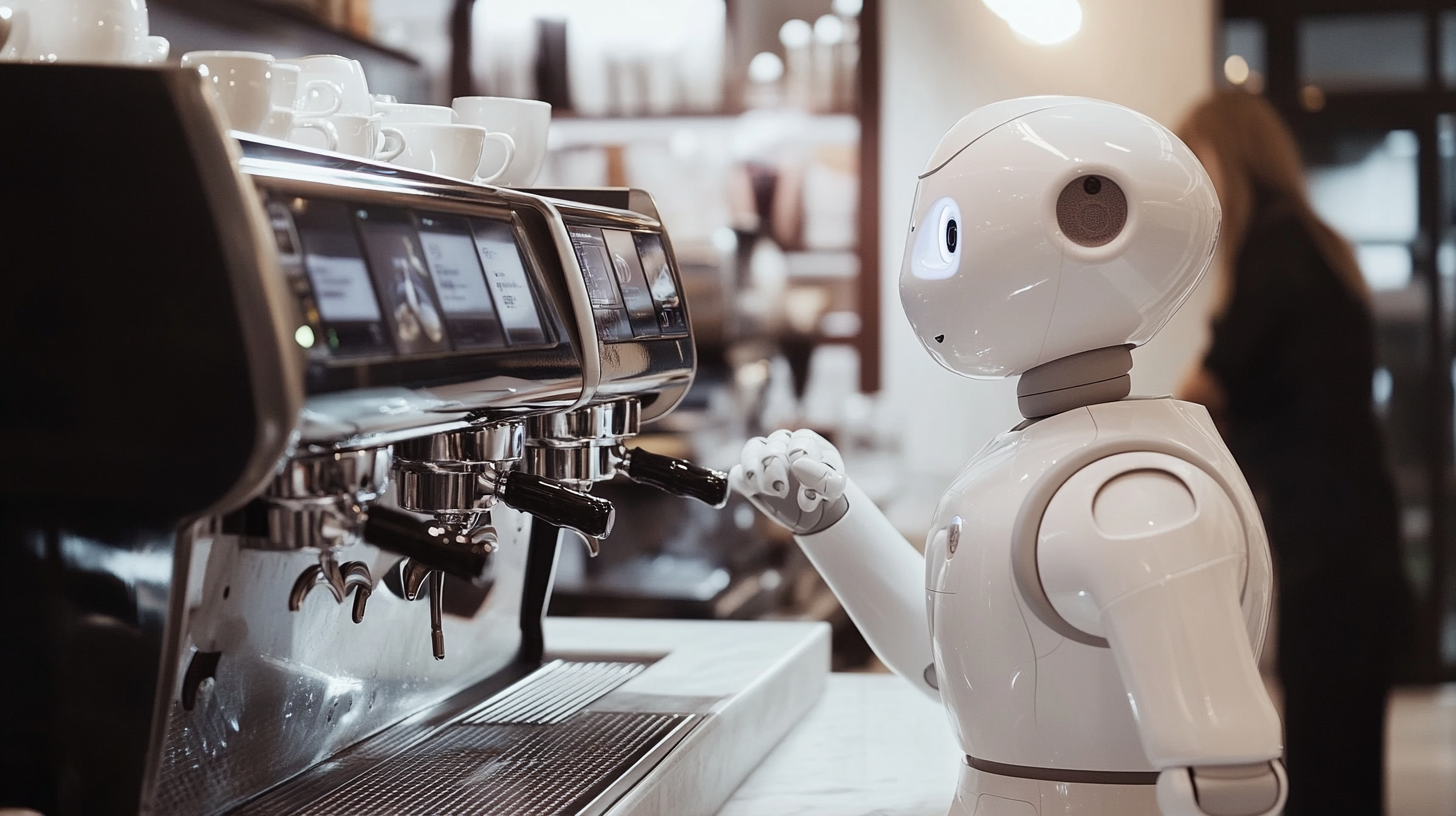

Unlocking Global Market Potential with Robot Coffee Vending Machines across Diverse Industries
With speed becoming an increasingly important feature of the world, along with convenience and efficiency, there had to be the introduction of some innovative systems to redefine traditional industries. An innovation that fit into this category is the Robot Coffee Vending Machine. Quite very typical of technological wonders, the Robot Coffee Vending Machine not only simplifies the coffee purchasing process but enriches the overall experience for all consumers. These machines are turning business standards upside down, setting the scene for their seamless yet automated manner of relishing a perfect cup of coffee at any time and any place. The combination of robotics, artificial intelligence, and user-centered design is truly unlocking global market potential across various sectors.
As companies alter their transformation trajectory, Robot Coffee Vending Machine integration is now emerging as a revolution that could potentially attract a wide cross-section of audiences, from busy office users to those on the go at airports. In this way, it meets a big portion of what requirements it wants in terms of quality and speed of service and also caters to the interests of a growing population of tech-savvy, modern consumers. In such an exercise, we will examine the various impacts and applications of these machines across different sectors and make sense of their role in future coffee consumption as well as business commercial operations worldwide.

The Rise of Robot Coffee Vending Machines in Today’s Market
Wow! The way robot coffee vending machines will revolutionize the service industry is indeed amazing! For example, high-tech vending robots are equipped to fast-track the production of quality coffee solutions for today's busy world. Even as it has surfaced to the beverage industry, one would further note that customer demands for speedy services and tailored services to fit the different tastes have continued to be driving factors contributing to the growth of robot vending machines. For instance, robots installed in offices give employees customized coffee beverages all day long without requiring them to wait in long lines or sit around waiting for service at cafes. These kinds of machines vary in brewing technology so that they can make drinks such as espressos and lattes, especially for an individual person. Not only does that sort of client servicing increase client satisfaction, but even those employees can make a workday more productive, enjoying their drink right next to their desk. These machines are fast becoming ubiquitous outside the corporate norm; from retail malls to airports and even educational institutions, robot coffee vending machines become compulsory installations. They work efficiently with minimum staffing and are capable of adapting to various business models, hence making them cheap options for many organizations that want to improve customer experience Their potential could be alluding to several avenues broader than this trend in market explosion into further innovation and extension across the possible bases within this sector and beyond.

Exploring the Benefits of Automation in the Coffee Industry
The coffee market is undergoing a radical transformation, with the introduction of robotic coffee vending machines. Automation technology has greatly increased use in the coffee-making industry. Such machines facilitate and automate coffee preparation, but they can also assure the quality of their products, which would meet various expectations from their clientele. In saving the labor costs through automating coffeemakers, the business appears prudent considering the time saved, which could lead to energy saving, better service, and cocktails.
The buzzword today is automation-finally entered into the world by replacing health and logistics separately among others. The application of robot coffee vending machines meets not only the requirement of efficiency but also the tendency of consumers to want convenience and speed. With automation, a business can allow itself to have real-time data insights and use them to respond dynamically to trends of changing market demands and tastes.
Besides, automated coffee vending could instill an ever-lively retail environment with personalized experiences driven by an individual's recommendation based on a purchasing behavior. One could visualize such vending machines-placed at vantage traffic spots-turning out into a perfect choice to provide quality coffee on the run for a consumer. Such a scenario is not just going to convert consumer satisfaction into gold coins but open up market potential across different industries, showing that automation in the coffee industry is not about efficiency but the future creation of brand loyalty.

Diverse Applications of Robot Coffee Vending Machines Across Sectors
As just one of the many applications of robotic coffee vending machines across sectors, this has revolutionized how a consumer can enjoy his coffee fix on a daily basis. For example, in organizations, the machine serves to beef up productivity since the quality coffee it brews is offered with no long break hours needed for the employees. As reported by IBISWorld, the market for coffee vending machines is anticipated to reach $2.8 billion globally by 2025, recording a compound annual growth rate of 4.5%. Emerging demand for more convenience and automation in fast-paced working conditions is also promoting this growth.
Automating coffee vending services improves the hospitality industry, streamlining service and enhancing customer experience. Guests at hotels and resorts can have their coffees brewed quickly and personalized at any point in time, which shaves considerable time off the convenience comedians are used to with general coffee services. The research by Grand View- currently published-also suggests that the global coffee machine market will grow at 5.7% CAGR since innovations such as robotic technologies meet customers' desire and operational efficiency.
These machines go for campuses as well. They are designed specifically for students whose lives are always on the go. Between classes, they really require quick sustenance of energy. Research and Markets say that the rise in vending machines being installed in schools indicates a larger trend toward infusion of technology in everyday facilities, with forecasts of increasing adoption of vending machines across schools. In using these kinds of machines, schools save on additional labor costs; students acquire an easy-to-use and dependable coffee experience.
Robotic coffee vending machines across different sectors make convenience available and also significantly add to the growth figures in the market, reflecting transformative shifts in consumer behavior and preference.

Challenges and Solutions for Implementing Automated Coffee Solutions
Automated coffee solutions such as robot coffee vending machines come into play as an opportunity for different industries to venture into enhanced service offerings and improve operational efficiency. However, the implementation of such technology doesn't come without its challenges. One critical challenge is the installation of adequate infrastructure and power supply to cater to the high-tech machines. Some sites may require an upgrade of services to cope with the demand for power by the automated machines, adding overhead.
Another challenge is how consumers would accept and trust the machines. Although service delivery efficiency and reduced wait times become available, customers may not embrace them primarily due to quality of service-related concerns and absence of direct contact with someone. One way to bring down the customers' apprehension is through proving tags on superior quality of coffee by robots or giving trial use to familiarize customers with the equipment. Moreover, strategic marketing that highlights efficiency and consistency can further narrow the gap between consumers and automated services.
Indubitably, another challenge is adoption and reliability of maintenance of robot coffee machines. The machines should be adaptable from the busy urban environment to a quiet office space. A few regular checks, maintenances, and failure addresses must therefore be in place for the machine to run smoothly without hindering services. Strategically planned and engaging consumers to these challenges can unleash the powers of robot coffee vending machines in various industrial situations.
Future Trends: Innovations in Coffee Vending Technology and Market Growth
The coffee vending industry today is followed up with another change, namely robot coffee vending machines. Ever since their arrival in the market, these machines have proved to be the harbinger of efficiency and service speed and have created disruptions in various industries like retail and hospitality. With the global trends headed toward convenience and automation, Jetsons-style vending technology will ride the wave of the demand for high-quality coffee on the go.
The decaffeinated coffee market is supposed to be worth $15 billion by 2024, with prospects going as high as $22 billion by 2032. This signals a compound annual growth rate of 4.8%. This growth trend signifies the increasing demands of consumers for decaf options, especially active consumers and health-conscious people who want to reduce their caffeine intake. Thus, robot coffee vending machines can quickly respond to these client's varying demands for decaffeinated coffee choices, thus making their customer experience better while cutting operational costs.
Innovation is not only about the brewing machines. New coffee vending technologies involve state-of-the-art thinking, artificial intelligence, and machine learning to allow machines to retrieve customer preferences, adjust inventory, and even interact with users on an interface. Such advanced capabilities are predicted to spur market growth since they not only enhance the customer's satisfaction but also refine business operations across various environments from offices to public transit stations. An exciting build-up of momentum ahead can be seen as this coffee vending segment begins to evolve, driven by technology and consumer change."